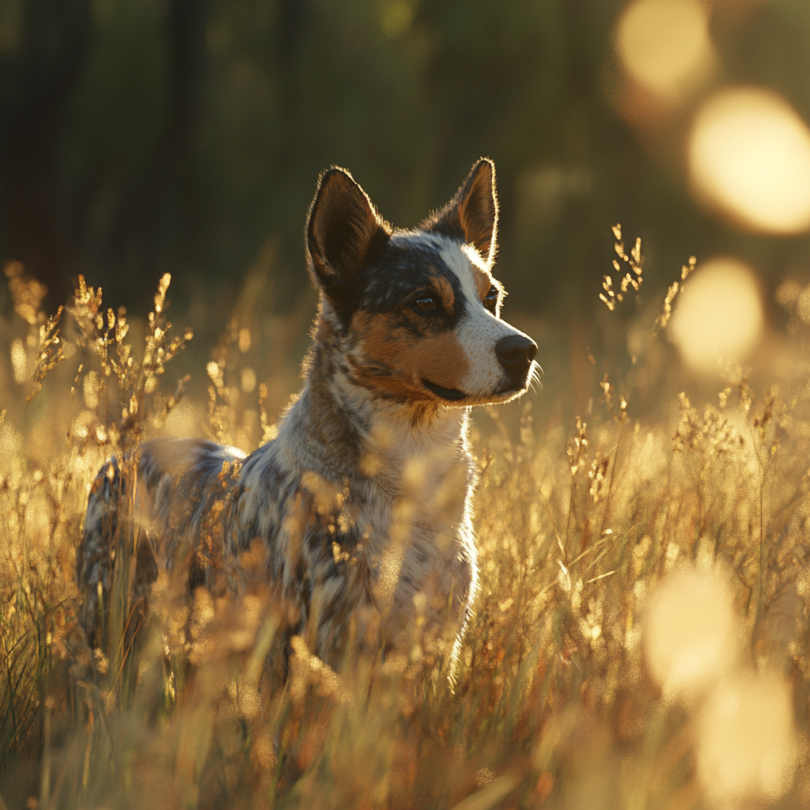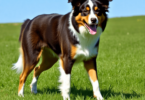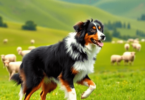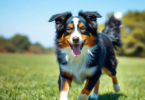Introduction to the Australian Cattle Dog (ACD)
The Australian Cattle Dog (ACD), also known as the Blue Heeler or Queensland Heeler, has a fascinating history that comes from the rough terrains of Australia. This breed was created in the 19th century by mixing various working dogs, such as the Smithfield and Dingo, to produce a hardworking herding dog. Their main job was to handle cattle on vast ranches, demonstrating their cleverness and agility.
Why Understanding ACD Matters
For potential owners, it’s crucial to grasp what makes ACDs tick. These dogs require both physical exercise and mental stimulation, making them ideal for energetic families or individuals who love spending time outdoors.
Here are some important things to keep in mind:
- Loyal Companions: ACDs are known for forming strong connections with their families.
- Energetic Nature: These dogs need more than two hours of exercise each day.
- Training Necessity: To channel their intelligence effectively, early socialization and training are vital.
The Lifespan of an ACD
With a lifespan ranging from 12 to 14 years, dedicating time to understand your Australian Cattle Dog’s requirements can lead to a rewarding relationship.
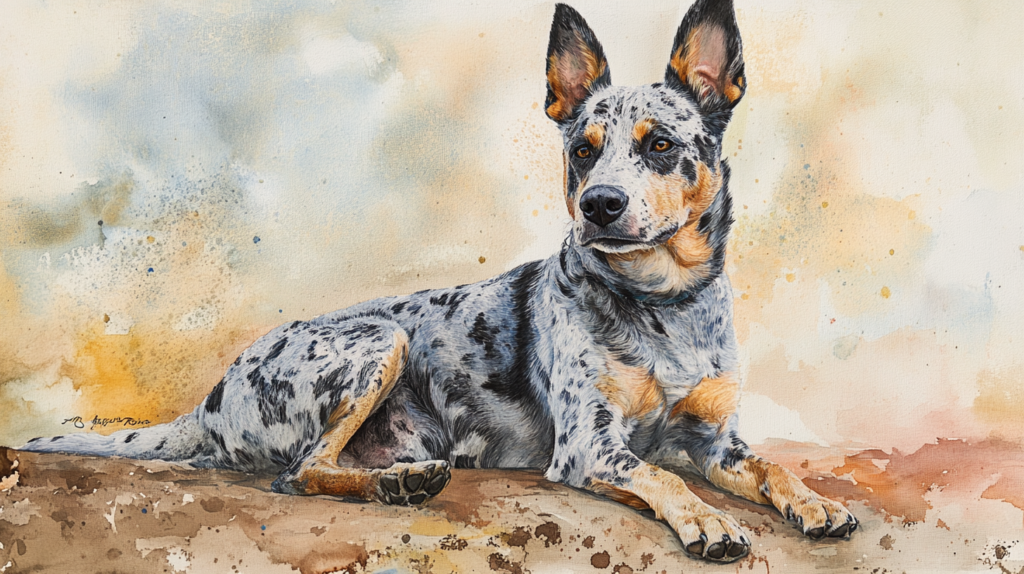
Blue Heeler Breed Overview
The Australian Cattle Dog (ACD), often referred to as the Blue Heeler or Queensland Heeler, is a compact and muscular breed known for its unique characteristics.
Physical Traits
- Size: Males typically stand about 51 cm (20 inches) tall, while females are around 48 cm (19 inches).
- Weight: This breed generally weighs between 17 to 23 kg (37 to 50 lbs).
- Life Expectancy: With proper care, ACDs can live between 12 to 14 years, with some exceptional cases like Bluey, who lived an astonishing 29.5 years!
Temperament and Personality Traits
Australian Cattle Dogs are celebrated for their:
- Loyalty: They form strong bonds with their families.
- Intelligence: ACDs are quick learners and thrive on mental challenges.
- Courage: These dogs display confidence and bravery, making them excellent working companions.
Comparison with Related Breeds
Understanding the ACD in relation to its counterparts can help potential owners make informed decisions:
- The Blue Heeler shares the same lineage as the ACD, primarily distinguished by color variations and regional naming conventions.
- The Queensland Heeler is another name for the same breed. All three names reflect the dog’s heritage as an exceptional herding animal.
Exploring these traits helps prospective owners appreciate what makes the Australian Cattle Dog a remarkable breed suited for active lifestyles and dedicated companionship.

Queensland Heeler History
The Australian Cattle Dog (ACD) has a fascinating history that comes from the tough outback of Australia. This amazing breed was created in the mid-1800s by early settlers who needed a reliable herding dog to handle cattle in large, difficult areas.
Key historical highlights include:
- Origins: The breed’s ancestors include a mix of native Australian Dingo and various herding breeds brought over by European settlers, such as the Scottish Highland Collie.
- Herding Proficiency: Farmers sought dogs that could work independently, displaying tenacity and intelligence. The ACD quickly became known for its ability to nip at cattle heels, encouraging them to move without causing injury.
- Recognition: Officially recognized by the Australian National Kennel Council in 1980, the ACD has since gained popularity worldwide, celebrated for its loyalty and work ethic.
This breed’s history is not just about herding; it reflects the spirit of Australia itself—resilient, hardworking, and deeply bonded to its people. Understanding this background enriches the appreciation for these remarkable companions, setting the stage for their role as family pets and working dogs alike.
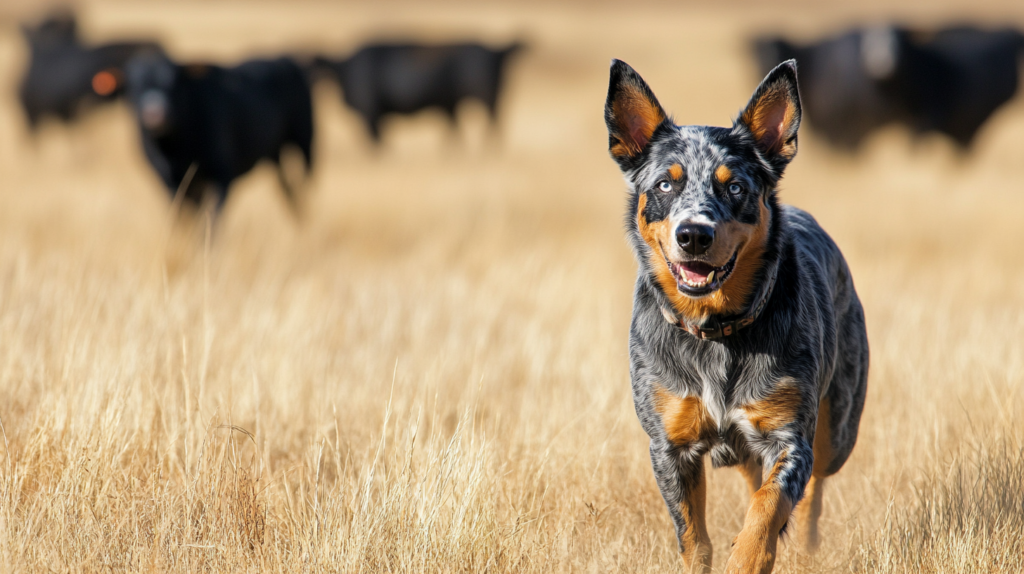
Physical Characteristics of the ACD
The Australian Cattle Dog (ACD) has a striking appearance that matches its hardworking nature. Here’s a closer look at their physical traits:
- Size: Males generally stand around 51 cm (20 inches) tall, while females reach about 48 cm (19 inches).
- Weight: These compact canines weigh between 17 to 23 kg (37 to 50 lbs), showcasing a muscular build ideal for herding.
- Coat: ACDs have a unique water-resistant double coat, which can be short or medium in length. Their fur usually comes in hues of blue or red speckled with darker markings.
- Eyes: Their expressive eyes are often blue or brown, reflecting their intelligence and alertness.
Life expectancy for an Australian Cattle Dog ranges from 12 to 14 years. A notable example is Bluey, who lived an astonishing 29.5 years, showcasing the breed’s potential longevity when well cared for.
These dogs are strong and agile, making them perfect companions for active families and individuals alike.
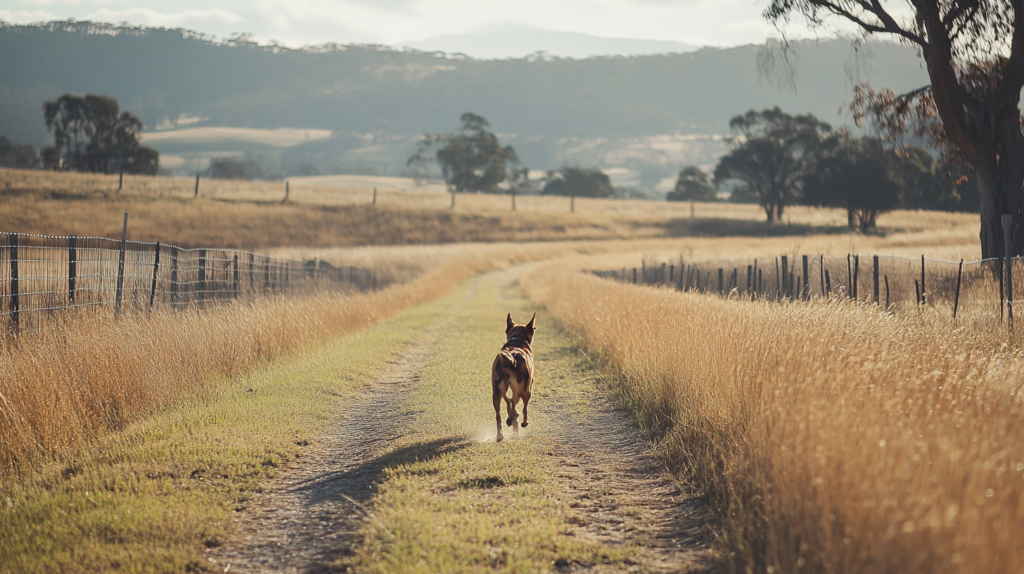
Temperament and Personality
The Australian Cattle Dog (ACD) is a delightful blend of intelligence, loyalty, and spirited energy. This breed thrives on companionship and forms strong bonds with their families, often displaying a protective nature. These dogs tend to be cautious around strangers, making them excellent watchdogs while cherishing their loved ones.
Key personality traits include:
- Loyalty: ACDs are fiercely devoted to their owners, often following them around the house or yard.
- Intelligence: Known for their quick learning abilities, they excel in obedience training and can easily master new commands.
- Energetic: Their high energy levels require plenty of exercise and mental challenges to keep them content. Boredom can lead to mischievous behavior.
- Courageous: Originally bred for herding cattle, ACDs possess a brave spirit that makes them bold in challenging situations.
Socialization from an early age is crucial. Exposure to various environments, people, and other animals helps prevent behavioral issues like nipping or excessive barking. Understanding these personality traits enables prospective owners to appreciate the joys and responsibilities of having an Australian Cattle Dog as part of the family.
Health Concerns and Lifespan
Understanding Australian Cattle Dog health issues is essential for any prospective owner looking to provide the best care. This breed can be prone to several health conditions, including:
- Progressive Retinal Atrophy (PRA): A genetic eye disorder that can lead to blindness.
- Hip Dysplasia: A common issue where the hip joint doesn’t fit into the hip socket properly, potentially causing pain and mobility issues.
- Deafness: Particularly in dogs with merle coats, this can be a hereditary condition.
To mitigate these risks, preventative measures play a crucial role:
- Regular Veterinary Check-Ups: Routine visits help catch potential health issues early on.
- Genetic Testing: Knowing your dog’s genetic background can help gauge susceptibility to certain conditions.
Pet insurance also becomes an invaluable asset for managing unexpected expenses related to these Australian Cattle Dog basics. With costs of treatments and surgeries on the rise, having coverage can ease financial burdens while ensuring your furry friend receives necessary care.
With a life expectancy of 12 to 14 years, taking proactive steps in health management will contribute significantly to your Australian Cattle Dog’s quality of life.

Nutrition Requirements
The nutrition for Australian Cattle Dogs plays a crucial role in their health and vitality. Tailoring their diet to their age and activity level ensures optimal development and well-being. Here’s a quick guide for feeding your ACD:
Ideal Diet
- Puppies (up to 12 months): High-quality puppy food rich in protein is essential for growth.
- Adults (1 to 7 years): A balanced diet with high-quality kibble or wet food, focusing on meat as the primary ingredient.
- Seniors (7+ years): Nutrient-dense diets that are lower in calories to prevent weight gain while still providing essential vitamins.
Feeding Schedule
- Puppies: Three to four meals per day until six months.
- Adults: Two meals per day, ideally spaced 8-12 hours apart.
Portion Sizes
- Follow the feeding guidelines on your dog food packaging based on weight.
- Monitor your dog’s condition; adjust portion sizes if they gain or lose weight unexpectedly.
Foods to Avoid
- Human snacks: Chocolate, grapes, onions, and avocados can be toxic.
- Table scraps: These can lead to obesity and digestive issues.
Supplements
Consider adding supplements such as:
- Omega fatty acids for skin and coat health.
- Joint support formulas containing glucosamine and chondroitin.
Focusing on proper nutrition will contribute significantly to your Australian Cattle Dog’s longevity and quality of life.
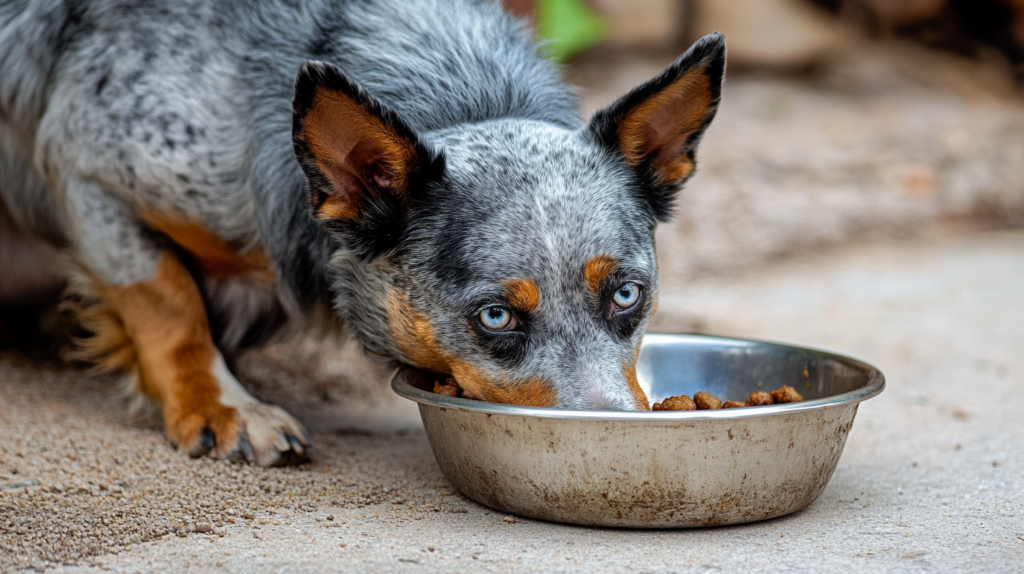
Australian Cattle Dog Grooming Needs
Grooming your Australian Cattle Dog (ACD) is an essential part of keeping them healthy and looking fabulous. Here are some grooming tips for ACDs to consider:
1. Brushing Frequency
Aim to brush your ACD at least once a week. This helps remove loose hair and dirt while distributing natural oils throughout their water-resistant double coat. During shedding seasons, which typically occur in spring and fall, more frequent brushing may be necessary—think every few days!
2. Bathing Techniques
Bathing should be done as needed, usually every 4 to 6 weeks. Use a high-quality dog shampoo that won’t strip the coat’s natural oils. Rinse thoroughly to avoid any residue that might irritate their skin.
3. Water-Resistant Double Coat Care
The unique double coat of ACDs requires special attention. Regular brushing prevents mats and tangles while keeping the coat healthy. A slicker brush is particularly effective for this breed.
4. Dental Hygiene Tips
Oral health matters! Aim for weekly tooth brushing using dog-specific toothpaste to prevent tartar buildup and gum disease. Dental chews can also help keep their teeth clean and breath fresh.
Keeping up with these grooming practices ensures your ACD stays comfortable, healthy, and ready for action!
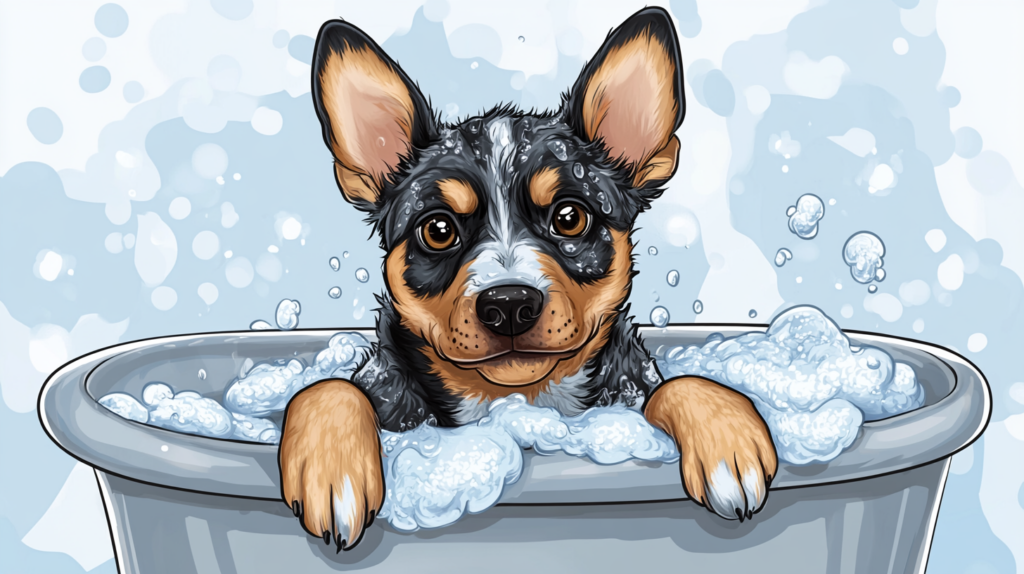
Exercise Requirements
Australian Cattle Dogs (ACDs) are bundles of energy, and their exercise needs reflect that vibrant spirit. To keep your ACD happy and healthy, aim for at least two hours of exercise per day. This can include:
- Long walks or jogs: A brisk walk is a great way to start the day.
- Playtime in the yard: Tossing a ball or frisbee can help burn off some of that excess energy.
- Agility training: Set up an obstacle course to challenge their physical abilities.
Mental stimulation is equally important for ACDs. Engage their sharp minds with activities such as:
- Puzzle toys that dispense treats
- Hide and seek games around the house
- Interactive fetch where they must retrieve specific items
Recognizing signs of over-exertion or fatigue in your dog is crucial. Keep an eye out for:
- Heavy panting or drooling
- Reluctance to continue exercising
- Unsteady gait or disinterest in play
By ensuring your ACD gets the right mix of physical and mental activities, you’ll cultivate a well-rounded companion who thrives in both body and mind.
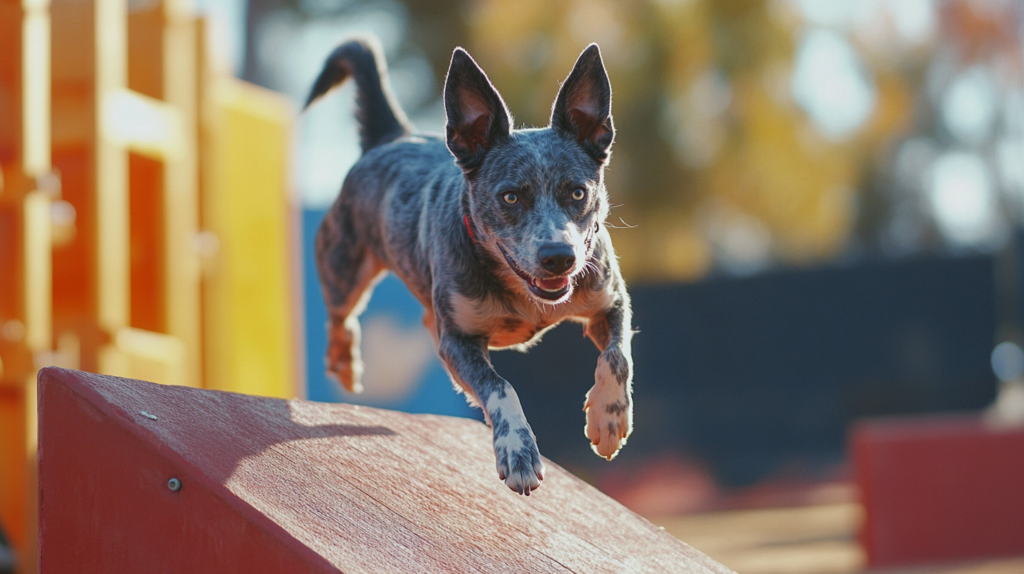
Training Strategies
Training Australian Cattle Dogs requires a blend of patience, consistency, and understanding their unique needs. This breed thrives on structure and benefits significantly from early socialization. Introducing ACD puppies to a variety of people, environments, and experiences helps foster confidence and reduces the likelihood of behavioral issues.
Effective Training Methods
- Positive Reinforcement: Use treats, praise, or play as rewards for good behavior. This method encourages learning while reinforcing the bond between you and your dog.
- Basic Commands: Focus on essential commands such as sit, stay, come, and heel. These form the foundation for more advanced training.
- Short Sessions: Keep training sessions brief (about 5-10 minutes) but frequent to maintain their interest and enthusiasm.
Addressing Behavioral Issues
ACDs are spirited pups with a tendency to nip or bark excessively if not properly trained. Here are some strategies:
- Redirecting Nipping: Provide appropriate chew toys to redirect nipping behavior during playtime.
- Barking Management: Teach the “quiet” command to curb excessive barking. Reward them for being calm and quiet.
With commitment and the right techniques, training Australian Cattle Dogs can be a fun and rewarding experience in this ultimate breed guide adventure!
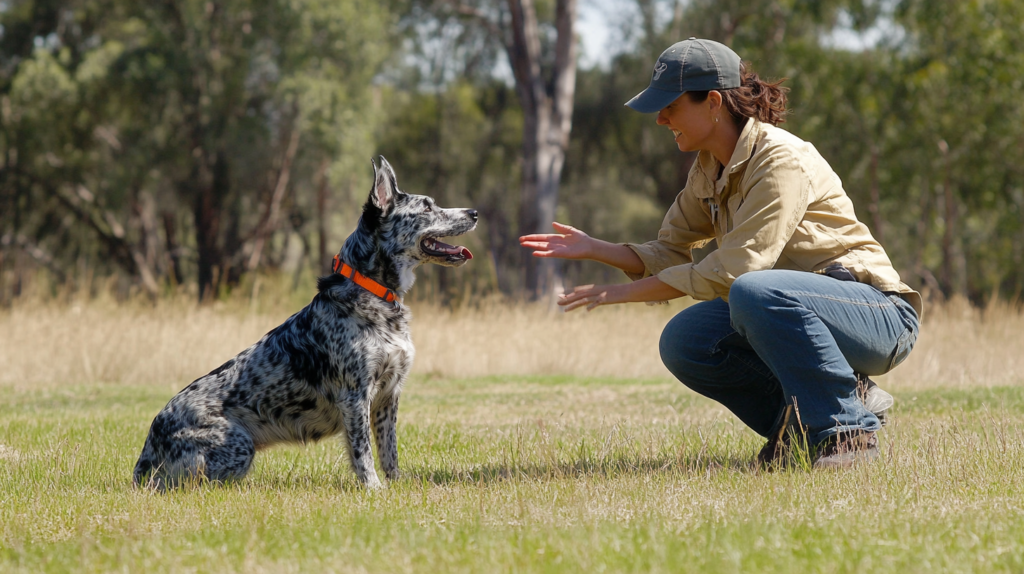
Living Environment
Creating the ideal living environment for Australian Cattle Dogs (ACDs) requires careful consideration of their energetic nature and social temperament. Here are some essential factors to keep in mind:
1. Space Requirements
ACDs thrive in environments that offer ample space to roam and play. While they can adapt to smaller homes, access to a secure yard is crucial for them to burn off energy.
2. Family Compatibility
ACDs are highly loyal and often form strong bonds with their families. They do well in households with children, where they can engage in playtime and family activities. Single owners who lead an active lifestyle will also find great companionship in these dogs.
3. Urban vs. Rural Living
In urban settings, ACDs need daily walks and playtime at dog parks to meet their exercise requirements. Noise from city life may require additional training for adjustment.
Rural living offers more opportunities to explore and engage their herding instincts. ACDs excel in wide-open spaces, making them excellent companions for those with farms or large properties.
Creating an engaging living environment ensures that your ACD remains happy, healthy, and fulfilled.

Australian Cattle Dog As a Family Pet
The Australian Cattle Dog (ACD) can be an exceptional family pet, blending loyalty, intelligence, and a spirited nature. Their unique traits make them particularly well-suited for active families. Here’s what to consider when welcoming an ACD into your home:
1. Loyal Companionship
These dogs bond closely with their families. They thrive on interaction and love being involved in daily activities. Expect a furry shadow following you around!
2. Playful Energy
ACDs are bundles of energy. Regular playtime is essential to keep them happy and healthy. Games like fetch or tug-of-war are great options to channel their enthusiasm.
3. Guarding Instincts
While ACDs are affectionate with their families, they can be wary of strangers. This natural instinct makes them effective watchdogs, alerting you to any unusual happenings around the home.
4. Compatibility with Children
Their playful demeanor often makes them great companions for children. However, supervision is necessary as their herding instincts may lead to nipping during exuberant play.
5. Training Opportunities
ACDs respond well to training, making them suitable for teaching children responsible pet care and obedience commands.
Bringing an Australian Cattle Dog into your family can create an enriching environment filled with joy and adventure, as long as you’re ready for the commitment!
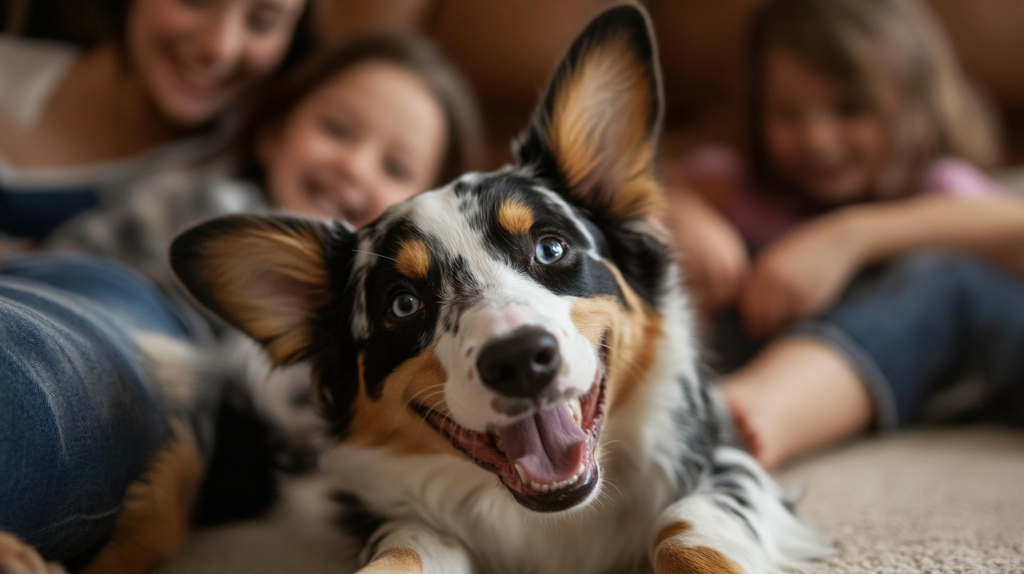
Conclusion
Are you thinking about bringing an Australian Cattle Dog into your home? This breed is smart, full of energy, and extremely loyal. To ensure a happy and healthy life for both you and your future furry companion, it’s important to learn more about their needs and traits.
Here are some steps you can take:
- Research extensively: Understand the unique qualities that make ACDs special.
- Consider lifestyle compatibility: Make sure your living situation is suitable for this active breed.
- Connect with experienced owners or trainers: Get insights on training methods and care.
With the right knowledge from resources like Australian Cattle Dog: The Ultimate Breed Guide, potential owners can make informed decisions. Embrace the journey of learning about Australian Cattle Dogs, ensuring they thrive in their new homes while becoming beloved family members!
FAQs (Frequently Asked Questions)
What are the key characteristics of the Australian Cattle Dog?
The Australian Cattle Dog (ACD), also known as Blue Heeler or Queensland Heeler, is known for its intelligence, agility, and strong work ethic. They typically have a medium size, weighing between 30 to 50 pounds, and have a life expectancy of around 12 to 16 years. Their temperament is loyal and protective, making them excellent companions.
What health concerns should I be aware of with Australian Cattle Dogs?
Common health issues faced by Australian Cattle Dogs include progressive retinal atrophy, hip dysplasia, and deafness. Regular veterinary check-ups and preventative measures are essential to ensure their well-being. Additionally, considering pet insurance can help manage potential health expenses.
How often should I groom my Australian Cattle Dog?
Australian Cattle Dogs have a water-resistant double coat that requires regular grooming. Brushing should be done at least once a week to reduce shedding and maintain coat health. Bathing can be done as needed, and dental hygiene should also be prioritized through regular brushing.
What kind of exercise do Australian Cattle Dogs need?
ACDs require daily exercise to stay healthy and happy. It’s recommended they engage in at least one hour of physical activity each day, which can include walks, runs, or playtime activities like fetch. Mental stimulation is also important; activities such as agility training can keep them engaged.
What is the ideal living environment for an Australian Cattle Dog?
Australian Cattle Dogs thrive in environments where they have ample space to run and play. They are compatible with families as well as single owners but require a good amount of physical activity. While they can adapt to urban settings, rural areas with more open space are often ideal for their energy levels.
Why is early socialization important for Australian Cattle Dogs?
Early socialization is crucial for Australian Cattle Dogs because it helps them develop into well-rounded adults. Exposure to various people, environments, and other animals during their formative months can prevent behavioral issues such as nipping or excessive barking later in life. Training methods specific to ACDs can enhance their obedience and responsiveness.
